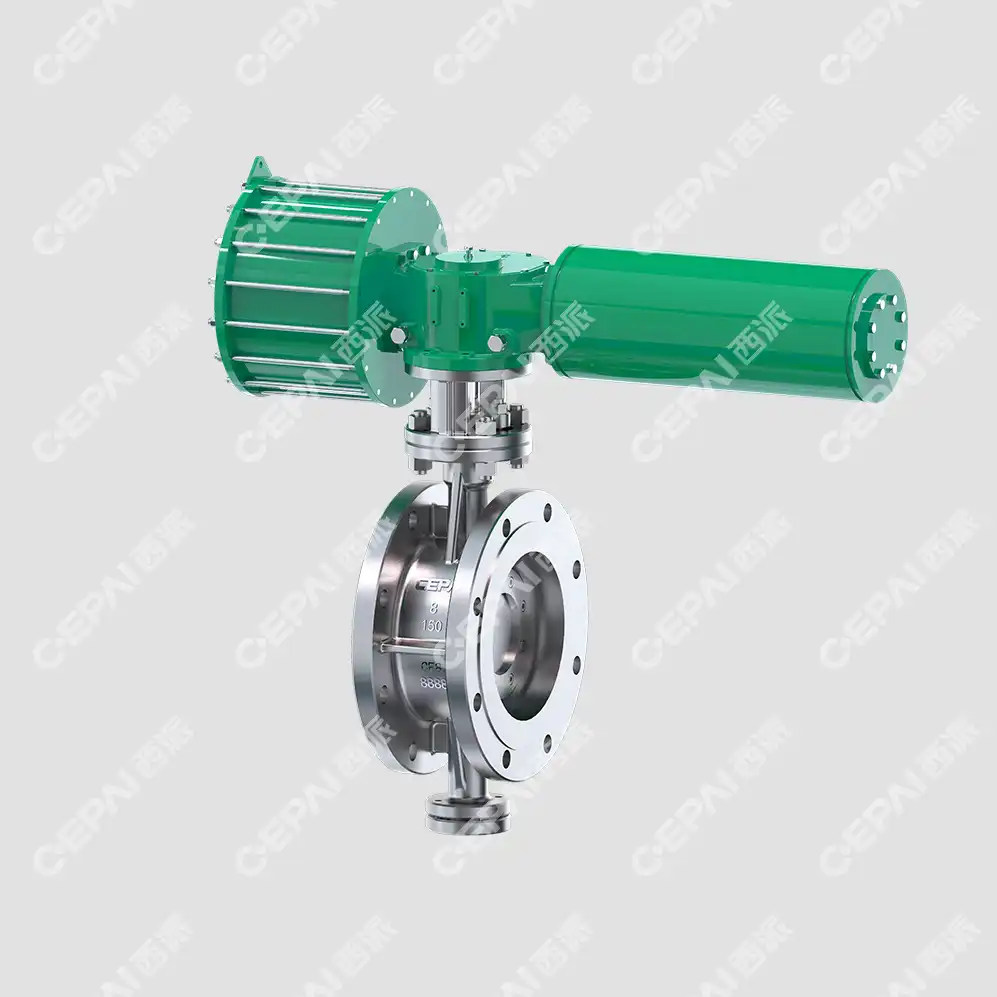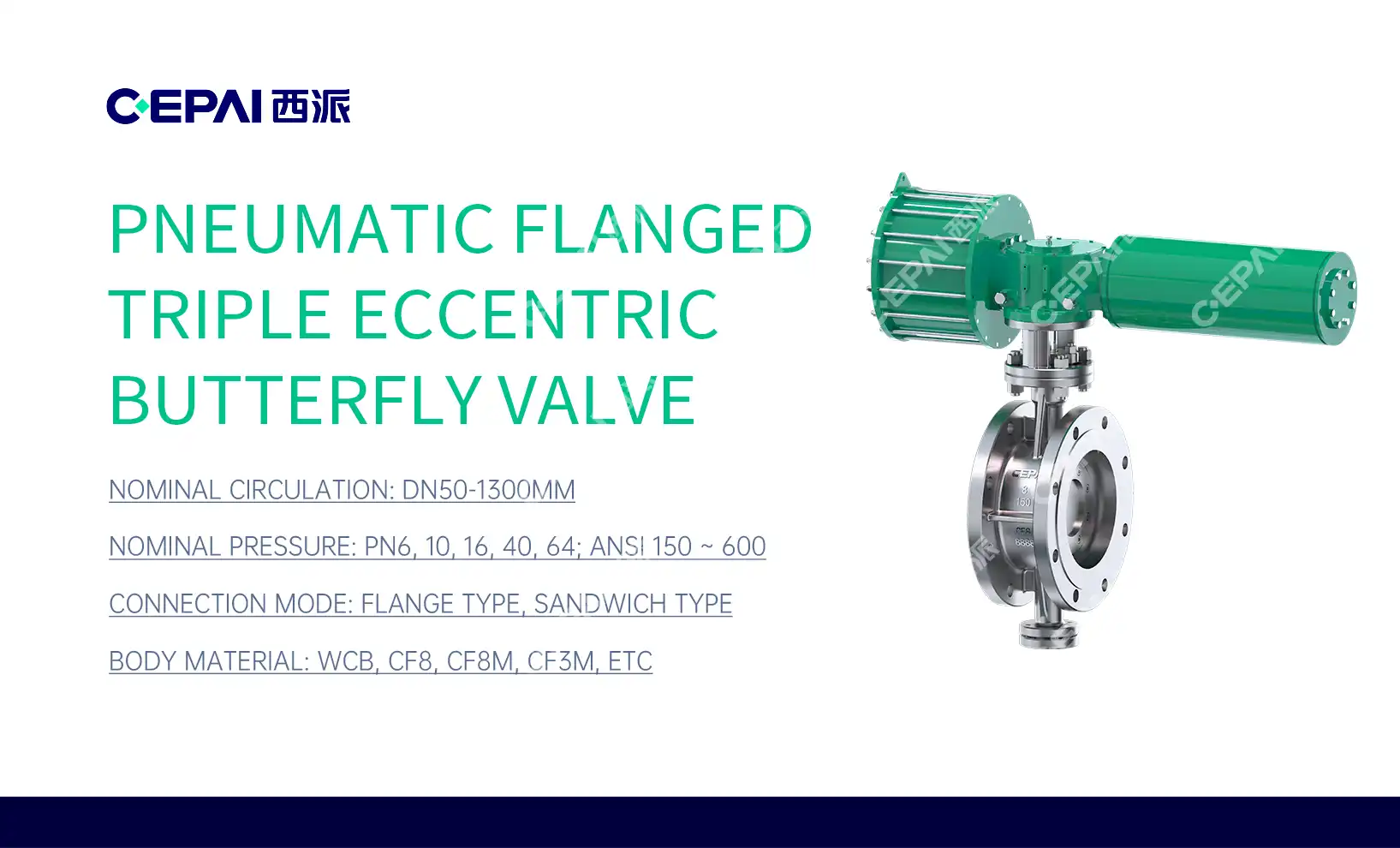Design Features of Triple Offset Valves
Eccentric Shaft Positioning
The first eccentricity in triple offset valves involves positioning the shaft away from the centerline of the valve body and disc. This design element allows for a cam-like action during valve closure, reducing wear on the sealing surfaces. As the disc rotates, it moves away from the seat until the final degrees of closure, where it makes contact with the seat ring. This unique movement minimizes friction and extends the valve's operational lifespan.
Inclined Disc Axis
The second eccentricity is achieved by inclining the disc axis relative to the pipe centerline. This feature further enhances the three eccentric butterfly valve's sealing capabilities by creating a helical motion during closure. The inclined disc axis ensures that the sealing surfaces make contact only at the final moment of closure, reducing wear and tear on both the disc and seat. This design aspect contributes significantly to the valve's ability to maintain a tight seal even after numerous operating cycles.
Conical Sealing Surface
The third eccentricity involves the creation of a conical sealing surface, rather than a cylindrical one. This design element is crucial for achieving zero-leakage performance. The conical shape allows for a more precise and uniform contact between the disc and seat, effectively eliminating any potential leak paths. As the valve closes, the conical surfaces align perfectly, creating a metal-to-metal seal that can withstand high pressures and temperatures.
Advantages of Triple Offset Valve Sealing
Zero-Leakage Performance
The primary advantage of triple offset valves is their ability to achieve zero leakage. The combination of the three eccentricities creates a sealing mechanism that is far superior to traditional butterfly valves. The metal-to-metal seal formed by the conical surfaces ensures that no fluid can pass through the valve when it is in the closed position. This zero-leakage performance is critical in applications where even minute leaks can lead to significant safety hazards or product losses.
Reduced Torque Requirements
Triple offset valves require less torque to operate compared to conventional butterfly valves. The three eccentric butterfly valve design allows for smooth opening and closing movements, reducing the force needed to actuate the valve. This lower torque requirement translates to smaller actuators, which can lead to cost savings and simplified installation. Additionally, the reduced friction during operation contributes to longer valve life and decreased maintenance needs.
Bi-Directional Sealing
Another significant advantage of triple offset valves is their ability to provide bi-directional sealing. The unique design allows these valves to effectively seal against pressure from either direction, making them versatile in various piping configurations. This bi-directional capability eliminates the need for additional check valves in certain systems, simplifying piping layouts and reducing overall system costs. The ability to seal in both directions also enhances safety by preventing backflow in critical processes.
Applications and Industry Impact
Oil and Gas Industry
In the oil and gas sector, triple offset valves have found widespread application due to their exceptional sealing performance. These valves are used in pipelines, refineries, and offshore platforms where reliable shut-off is crucial. The ability to handle high pressures and temperatures makes them ideal for steam systems, gas transmission lines, and crude oil processing. The zero-leakage feature is particularly valuable in preventing fugitive emissions, helping companies comply with stringent environmental regulations.
Power Generation
Power plants rely on triple offset valves, also known as three eccentric butterfly valve, for critical flow control applications. In steam systems, these valves provide tight shut-off, preventing energy losses and ensuring efficient operation. The valves' ability to withstand high temperatures and pressures makes them suitable for use in both conventional and nuclear power plants. Their reliable performance contributes to improved plant safety and reduced downtime, ultimately leading to increased power generation efficiency.

Chemical Processing
The chemical industry benefits from the superior sealing capabilities of triple offset valves when handling corrosive or hazardous materials. These valves are often used in reactors, distillation columns, and storage tanks where leak-tight isolation is essential. The metal-to-metal seal design allows for the use of specialized alloys that can resist chemical attack, extending valve life in harsh environments. The precise control offered by triple offset valves also enhances process efficiency and product quality in chemical manufacturing.
Conclusion
Triple offset valves, including three eccentric butterfly valve types, with their innovative design and superior sealing performance, have become indispensable in various industrial applications. Their ability to provide zero-leakage shut-off, reduced torque requirements, and bi-directional sealing makes them a preferred choice for critical flow control scenarios. As industries continue to demand higher efficiency, safety, and environmental compliance, the role of triple offset valves in ensuring reliable and leak-free operations becomes increasingly important. By understanding the principles behind their sealing mechanism, engineers can leverage these valves to optimize processes and improve overall system performance.
Contact Us
For top-quality triple offset valves and expert guidance on valve selection, trust CEPAI Group. Our advanced manufacturing techniques and commitment to innovation ensure that you receive valves that meet the highest industry standards. Contact us at cepai@cepai.com to learn how our products can enhance your operations and boost your bottom line.






